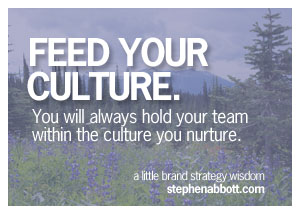If there was such a thing as a perfect business, we’d see it. In fact, we’d see plenty of them, because the perfection would show up in formulas and spreadsheets that would be copied over and over. The right way would be obvious—a benchmark by which all others would be measured.
But perfect is elusive.
Perfect leadership is not elusive because it’s unachievable. It’s elusive because there are so many options—so many conflicting styles, attitudes and opportunities—for leadership and so many diverse styles of teams. Great leaders make it work with whatever is available at the time and the values anchoring their actions. We are, after all, human.
Without fail, every single organization I get the opportunity to assess has some form of dysfunction—systems, processes, people or policies that are unconventional at best, outright chaotic at worst. From an outsider’s perspective, it’s easy to see this dysfunction and the textbook solution.
The logical next step is to open the fabled ‘Book of Best Practices’ (a best-seller among business consultant blowhards) and correct the offending issue with a smug sense of superiority. Simple. Right. Billable.
But I have also come to realize the tricky balance that exists within every organization, and certainly within the dynamic world of change and growth. There is always a healthy, balanced dysfunction found in Imperfect Leadership.
Somewhere in the gap between ‘perfect-best-practices’ and ‘fly-by-the-seat-of-your-pants’ is an organization’s ‘Normal’. It’s the place of personalities, habits and comfort zones. It’s the place where the business model—infused with the culture, climate and community—meshes nicely with the market opportunity. Disrupt this individual balance and the storm of unintended consequences will overwhelm any attempts at problem solving.
But problems—if they are truly holding the organization back from achieving its goals—have to be solved. And such is the dilemma of Imperfect Leadership.
Strong leadership recognizes the positive dysfunction of imperfection without ignoring—or excusing—the dysfunction that is holding them back. It’s a deep sense of honesty and self-reflection—an in-your-face reality check—that true leaders invite every single day.
Leaders must recognize and embrace their balance of dysfunction—recognizing it as balanced dysfunction—and acknowledge their chaos before we can accurately define and address the results of such chaos (their problems). Leaders must admit that they have grown into their chaos and have created systems and procedures to accommodate the dysfunction—it’s not normal, it’s just their normal. Leaders must dig deep and admit that the problem is really a problem—regardless of how deeply ingrained it is within the culture—and commit to change. Leaders must honestly connect-the-dots of ‘cause and effect’ to meet the challenges of change.
Leaders must also defend without compromise any balanced dysfunction they are unwilling to change, and accept the consequence openly. Ignoring the dysfunction is reckless, but defending it in service of goals AND values is actually very powerful.
Accepting the dysfunction is the first step. Admitting that the dysfunction is actually masquerading as an irreversible system is the tipping point. However, honouring your individual dysfunction is the power of Imperfect Leadership.
Strong brand strategy accepts Imperfect Leadership—all it’s flaws and value—as the reality before correcting the problems. Strong brand strategy embraces the functional dysfunction—the style and attitudes that feed the necessary culture —in order to confront the hindering dysfunction.
Strong leaders know honouring your individual dysfunction is the first step to finding a solution that will actually take hold and effect change and growth. Strong brand leadership is comfortable with Imperfect Leadership.
—-
I invite you to be part of the Twitter discussion, Monday Aug 3rd at 4pm PST, #LeadWithGiants. Really smart people will test my theory and explore the insights shared by everyone. These are the intended question, but the conversation could go anywhere. Feel free to add your thoughts here, too.
Q1 Is there such a thing as “perfect leadership”?
Q2 Is the notion of ‘Imperfect Leadership’ just an excuse for poor or weak leadership?
Q3 How does accepting ‘Imperfect Leadership’ add value to our organizations?
Q4 What happens when we confront ‘Imperfect Leadership’ with formulaic Best-Practices solutions?
Q5 Are there any behaviours that are unacceptable, even if labeled “imperfect”?
Q6 How do we recognize the difference b/w ‘Imperfect Leadership’ and poor or weak habits in order to affect change?
Q7 Who are some famous ‘Imperfect Leaders’?
Q8 Have you recognized your own balanced dysfunction? What is unconventional for you, but works in your favour?

